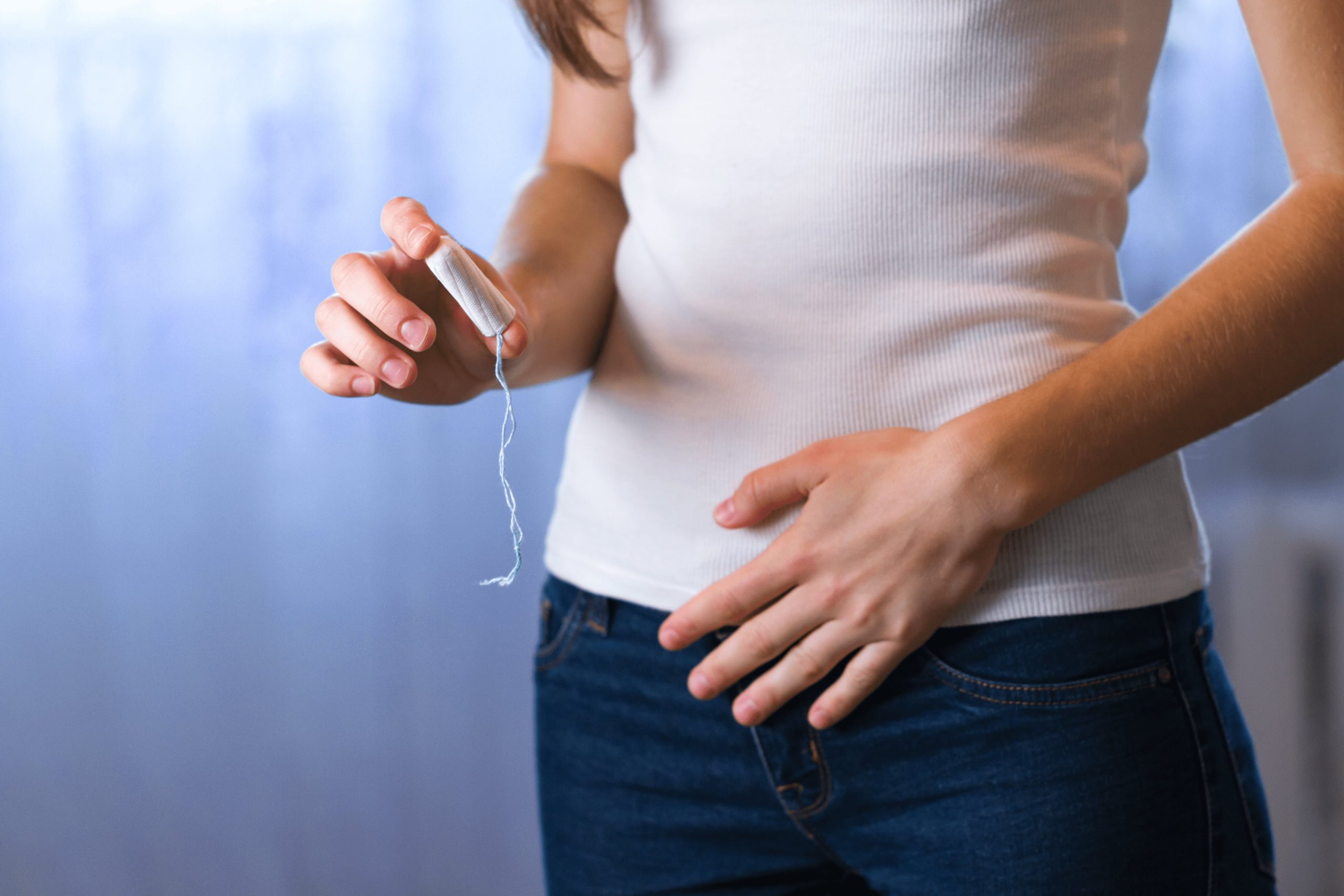Are tampons safe? It’s a question that has been debated for years, leaving many women feeling uncertain about using them. The fear of Toxic Shock Syndrome (TSS), a potentially deadly illness associated with tampon use, has caused some to shy away from this menstrual product. But here’s the truth: when used correctly, tampons can be a safe and effective way to manage your period.
In this article, we will address the concerns surrounding tampons and their safety. We’ll explore the manufacturing process, and the materials used, and provide you with the facts and statistics you need to make an informed decision. So, let’s dive in and separate the myths from the realities of tampon safety.

Contents
Are Tampons Safe?
When it comes to the safety of tampons, there has been ongoing debate and concern. However, if used correctly, tampons can be a safe and effective way to manage your menstrual cycle. Toxic Shock Syndrome (TSS) is a rare but serious illness that can be caused by improper tampon use.
It’s important to know how to use tampons safely to minimize the risk of TSS. Eagles Landing OB/GYN suggests the following guidelines to ensure the safe use of tampons during your period:
- Choose the right absorbency: Use tampons with the appropriate absorbency for your flow. Avoid using higher absorbency tampons when your flow is light, as they can increase your risk of TSS. Remember to change your tampon every four to eight hours or as needed to prevent bacteria growth.
- Proper insertion: Make sure to wash your hands thoroughly before inserting a tampon. Relax your muscles and find a comfortable position. Gently insert the tampon into your vagina, aiming toward your lower back. Follow the instructions provided by the tampon manufacturer for proper insertion.
- Regular checks: Regularly check your tampon for saturation to ensure timely changing. If your tampon feels uncomfortable or you experience any leakage, it may be time to change it.
- Overnight use: It is generally recommended to use a pad instead of a tampon for overnight use. This allows for better airflow and reduces the risk of TSS.
The U.S. Food and Drug Administration (FDA) has been regulating tampons to ensure their safety and efficacy. They have addressed concerns about the materials used in tampons and the manufacturing process. Tampon manufacturers and the FDA confirm that the level of dioxins, a by-product of bleaching, in tampons, is very low and poses no significant health risk.
How Does the FDA Evaluate the Safety of Tampons?
The safety of tampons is a top priority for the U.S. Food and Drug Administration (FDA). Before a tampon can be legally marketed in the United States, it must go through a thorough evaluation process by the FDA. This evaluation aims to ensure that tampons do not enhance the growth of bacteria that can lead to Toxic Shock Syndrome (TSS), a rare but serious condition.
To assess the safety of tampons, manufacturers are required to submit data to the FDA. This data includes information on the materials used to make the tampons and any applicators, absorbency levels, strength, and integrity of the product. The FDA also evaluates whether tampons alter the normal bacteria levels in the vagina or promote the growth of harmful bacteria.
In addition to these evaluations, the FDA regulates the materials used in tampon manufacturing to reduce risks to consumers. The 1976 US FDA Medical Device Amendment and the subsequent 1980 Final Rule classified tampons as Class II medical devices. This classification ensures that biocompatibility assessments and material assessments are conducted to ensure safety.
Furthermore, the FDA follows the guidelines set by the International Standard ISO 10993-1, which provides a framework for the biological evaluation and testing of medical devices. By adhering to these guidelines, regulatory authorities and manufacturers can assure the biocompatibility of tampons.
It’s important to note that these regulations and evaluations have contributed to the decline in reported cases of TSS associated with tampon use over the years. The FDA’s efforts, combined with increased informative labeling and educational initiatives by manufacturers, have played a significant role in ensuring the safety of tampons.
Are Reusable Tampons Safe?
When it comes to menstrual care products, there has been an increased interest in reusable options. Reusable tampons, also known as menstrual cups, offer an alternative to traditional disposable tampons. But are reusable tampons safe to use?

The FDA has not cleared or approved reusable tampons. In fact, the FDA discourages their use. This is because there is a lack of scientific evidence regarding their safety and potential health effects associated with long-term use. While reusable tampons may seem like a more eco-friendly option, it’s important to consider the potential risks.
One concern with reusable tampons is the risk of bacterial growth and infection. The vagina is a delicate ecosystem with a delicate balance of bacteria. Inserting a reusable tampon can disrupt this balance and increase the risk of infection. Additionally, if the cup is not properly cleaned and sanitized between uses, bacteria can multiply and lead to infections or other health issues.
Another point to consider is the potential for toxic shock syndrome (TSS). TSS is a rare but serious condition that can be caused by the bacteria Staphylococcus aureus, which produces toxins that can enter the bloodstream. While TSS can occur with any type of tampon, reusable tampons require longer wear time, which may increase the risk of developing TSS.
The safety of reusable tampons, or menstrual cups, is still uncertain. The lack of scientific evidence and FDA approval raises concerns about their safety and potential health risks. It’s essential to make informed decisions about your menstrual care products and prioritize your health and well-being.
Safety Concerns
Tampons are a popular choice for many menstruating individuals, offering convenience and comfort during their periods. However, it is important to address any safety concerns associated with their use. In this section, we will explore some of the potential risks and side effects that have been raised.
1. Toxic Shock Syndrome (TSS)
One of the primary concerns associated with tampon use is the risk of developing Toxic Shock Syndrome (TSS). TSS is a rare but serious condition caused by the overgrowth of certain bacteria in the body. It can lead to the release of toxins, causing organ failure or even death.
While TSS was initially thought to be primarily related to tampon use, we now know that anyone of any age can be affected. The main symptoms of TSS include sudden fever, flu-like symptoms, diarrhea, and low blood pressure. If you experience any signs of TSS, it is crucial to seek medical attention promptly.
It’s important to note that TSS from using tampons is very rare. In fact, the odds of developing TSS are estimated to be around one in 100,000. However, it is still crucial to follow proper tampon hygiene guidelines and avoid leaving a tampon in for longer than recommended by the manufacturer. Prolonged use beyond the recommended duration increases the risk of TSS.
2. Ingredients in Tampons
Another area of concern for some individuals is the ingredients used in tampons. While tampons are considered medical devices and not required to disclose specific ingredients on the labels, manufacturers must adhere to FDA regulations. The FDA evaluates tampons based on the materials used, absorbency levels, and their impact on vaginal bacteria.
Synthetic materials that were once used as tampon ingredients have since been discontinued. Currently, tampons are primarily made from cotton, rayon, or a blend of the two. However, it’s worth noting that other materials that are not intended to absorb menstrual blood might still be present in tampon strings or outer layers.
It is important to emphasize that the FDA has not confirmed the presence of asbestos in tampons, as alleged in certain online rumors. The FDA reviews all industry-supplied data on tampon design and materials, ensuring that tampons are safe for use. Moreover, tampon manufacturers are subject to FDA inspection, further ensuring safety standards.
3. Risks and Side Effects
While tampons are generally considered safe and widely used, there may still be risks and side effects associated with their use. It is important to be aware of these potential issues and take appropriate precautions.
Some individuals may experience irritation or sensitivity to the materials used in tampons. In rare cases, this can lead to mucosal irritation or contact sensitization. Additionally, some consumers may have concerns about potential exposure to allergens or chemicals linked to cancer or other toxicity.
However, it is essential to note that the FDA has stated that the “available scientific evidence” does not support concerns about tampon ingredients such as dioxin. Nevertheless, further research is needed to provide more comprehensive information.
To mitigate risks, some individuals may choose to take a cautious approach and opt for tampons made with organic cotton or those that have been independently certified for their safety. Being a conscious consumer and selecting products that align with your personal preferences and concerns is always a valid choice.
Frequently Asked Questions
How do you know when a tampon is full?
The best way to know if your tampon needs changing is to give a light tug on the tampon string. If it starts to pull out easily, then it’s time to change. Remember to change tampons every 4-8 hours to avoid the risk of infection.
Can I sleep with a tampon in?
It is safe to sleep with a tampon in, as long as it’s not for more than 8 hours. To minimize the risk of infection, it’s important to change tampons regularly and avoid leaving them in for too long.
What are the risks of tampons?
The main risk associated with tampons is toxic shock syndrome (TSS), a rare but potentially life-threatening illness caused by certain types of bacteria. Women who use tampons, especially when left in for too long, are most at risk of developing TSS. It’s important to follow proper hygiene and change tampons regularly to minimize this risk.
I am a medical student with experience and interest in Women’s health and well-being.